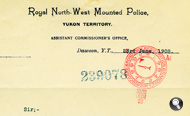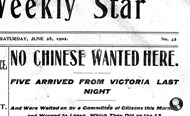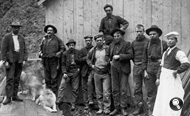
On June 2, 1898, a gold-seeker with the name of Tanaka, from Yokohama, Japan, was recorded by the North West Mounted Police (NWMP) as he crossed the Chilkoot Pass. By 1901 an official count showed 84 Japanese, 7 Chinese, and no “Hindu” in the Yukon. Demographic records, especially from the early 20th century, often grouped all people of Asian ancestry together, without indicating where they were from, or used terms like “Hindoos” which are open to misinterpretation. Asian people faced both social and legal discrimination, in the Yukon and across the country. The Chinese Immigration Act of 1885 charged each Chinese immigrant a “capitation tax” or “head tax.” In 1908 the Hayashi-Lemieux “Gentleman’s Agreement” between the Japanese and Canadian governments severely restricted the number of Japanese immigrants.
For many years, Asians — along with women and aboriginal people — were also prohibited from voting. Despite this prejudice and inequality the Asian residents of the Yukon established themselves as miners, labourers, household servants, sternwheeler crew members, entrepreneurs and even special constables for the NWMP.

The Royal Commission on Dr. Thompson’s veranda, Dawson City, August 1903; Asian servant in background.
YA, J.B. Tyrrell fonds, 82/15 #290

Masayuki Sakata was born in Japan in about 1889 and arrived in Dawson City with his parents on April 15, 1907. He became a well-known entrepreneur, operating restaurants in Dawson, Mayo and Keno. He also set up a lunch program for Dawson school children. In the 1930s he worked for the Treadwell Yukon Company Ltd. at their silver mines on Keno Hill; in later years he ran the Rex Cafe in Dawson and the Sourdough Cafe in Keno. On December 11, 1969 he became a member of the Yukon Order of Pioneers. He died in Whitehorse on April 22, 1974.

Massa Sakata in Mayo, 1937.
YA, Yukon Asian History Collection, 2006/146 #18









